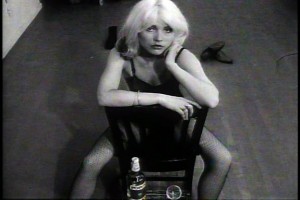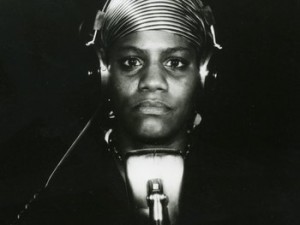Blank City and New York’s No Wave
 New York City is truly the place where artists find fame and camaraderie, and everyone takes occasional walks on the wild side. Nothing could be clearer in the documentary Blank City (2010), a thorough examination of the social and artistic peaks and valleys that defined the Big Apple from the mid-70s to the mid-80s.
New York City is truly the place where artists find fame and camaraderie, and everyone takes occasional walks on the wild side. Nothing could be clearer in the documentary Blank City (2010), a thorough examination of the social and artistic peaks and valleys that defined the Big Apple from the mid-70s to the mid-80s.
The irony’s not lost on me how whom I consider among the main movers and shakers in Houston in the 80s all now live in Gotham (Tom Bell, Bliss Blood, Robert Gibbons, Deborah Moore). The musicians, filmmakers and writers profiled in Blank City are as important to the pulse of a great city as any other aspect of its population. Some of the names on display are more familiar than other, but all of these people influenced a generation that has now started to influence the next generation. The compelling force of these artisans even spawned a nickname, No Wave. (Certainly rolls off the tongue easier than say mumblecore.)
Thurston Moore, Jim Jarmusch, John Lurie, Lydia Lunch, Deborah Harry, Susan Seidelman, Amos Poe, Nick Zedd, Steve Buscemi are just some of the talking heads remembering the era. If accounts are true as opposed to legend many of these artists bought themselves inexpensive 8mm film equipment and started their own cinematic orgs complete with public screenings. That too created a label, the Cinema of Transgression.
Blank City plays exclusively this weekend and next at the Museum of Fine Arts, Houston in conjunction with the series Blank City and New York’s No Wave. Other films, playing for the next two weeks, include Jarmusch’s debut feature Permanent Vacation and Lizzie Borden’s Born in Flames, a brash film that ends with a terrorist explosion on top of the World Trade Center (then less than a decade old). Zedd has particular insight into uses of film as propaganda as many of his movies were documents of police brutality and neighborhood gentrification.
The rapid evolution of the movement proceeds so fast that one season The Ramones, Talking Heads, and Blondie are being discovered at downtown rock clubs and the next year they’ve been forgotten and the hip new bands are The Contortions and Teenage Jesus and the Jerks.
Lest one thinks that Blank City is just pat-on-the-back style documentary filmmaking consider this bit of acrimony. Lurie (and Jarmusch) recall how Jean-Michel Basquiat would always be crashing on their floor, since he had no real home. Later when Basquiat was famous, according to Lurie, he ruined the scene. Before it was people who had little money but plenty of community spirit and coolness. Then Basquiat said it was uncool not to have money, and the scene imploded, or maybe everyone else just grew apart. Some of the events covered here may be familiar to audiences who saw the doc on TV Party a few years ago.
- Michael Bergeron















